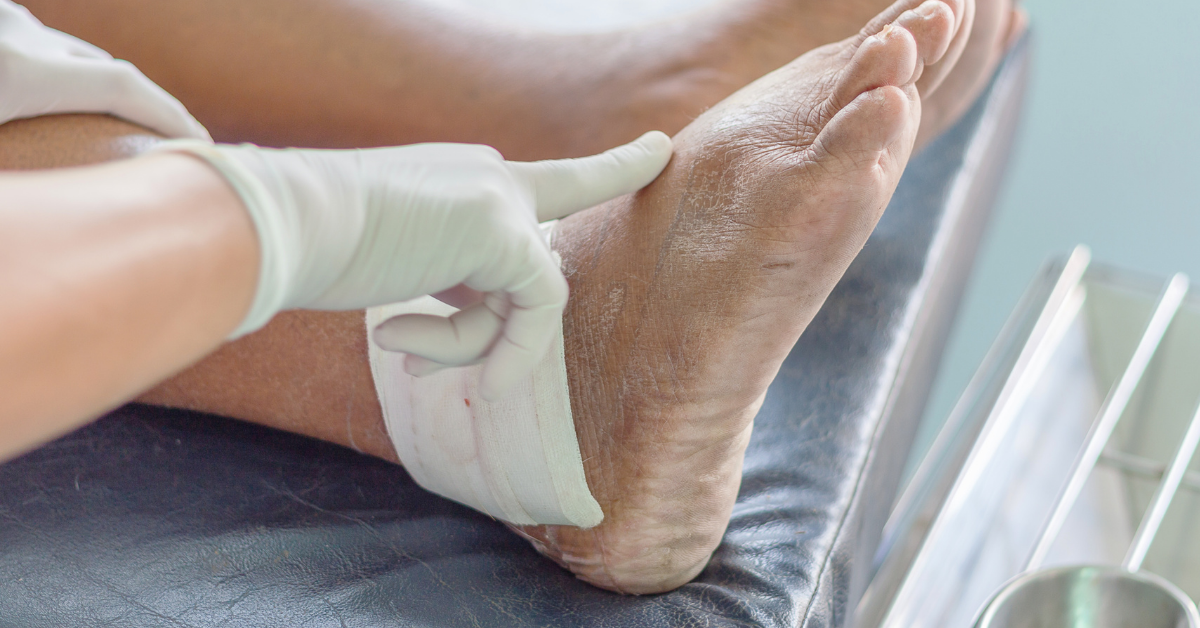In routine wound healing, debridement is a naturally occurring process. However, in people with multiple comorbidities, the progression of the wound through the normal phases of healing is impaired resulting in a chronic, non-healing wound. Wound debridement can help convert a chronic wound into an "active wound" with a wound microenvironment that is more conducive to healing.
What is Debridement?
Wound debridement refers to removing dead, devitalized tissue from the wound bed. The term was first introduced in the 16th century by Ambroise Parè and implied a simple incision of the wounds to cause drainage. Later, the term evolved to mean the removal of all foreign contaminants and devitalized tissue. In recent years, debridement has emerged as an integral component of wound care and encompasses a multitude of techniques used for the removal of dead tissue. Wound care specialists and podiatrists need to be aware of the different types of debridement methods available so that they can provide appropriate wound care.
Why Is Debridement Needed?
Dead, necrotic tissue in the chronic wound bed serves as a nidus for infections. The necrotic tissue is a nutrient-rich environment for the multiplying bacteria. Hence, the presence of devitalized, necrotic tissue is a significant barrier to wound healing.
Wound debridement facilitates wound healing by reducing bioburden and removing the necrotic tissue. The removal of slough and dead necrotic tissue also allows wound care specialists and podiatrists to better visualize the wound bed and determine the progress. It can be said that debridement helps to convert the chronic wound bed into an acute wound bed. Some of the ways through which debridement aids wound healing include:
- Reduced Bacterial Burden: Bacteria thrive in the presence of necrotic tissue. The removal of that tissue reduces the support for bacterial growth in the wound bed which helps to decrease the rates of infection. As bacteria are less likely to colonize a debrided wound, the presence of pro-inflammatory cytokines that interfere with healing is also significantly reduced. This helps to improve the wound healing rate.
- Improved Fibroblast Migration: In the presence of bacteria, the migration of fibroblasts that are involved in the deposition of collagen fibrils in the wound is compromised. The collagen fibrils help to fill the epithelial defect of the wound. A clean, debrided wound is better able to recruit fibroblasts to the wound site.
- Improved Tissue Perfusion: Debridement also improves local tissue perfusion at the wound site. This is because necrotic tissue interferes with local blood supply, and its removal helps to restore local tissue oxygenation.
When To Debride?
A careful assessment of the wound bed and edges should be carried out before any debridement procedure. Debridement is indicated when there is a build-up of dead, necrotic tissue, and slough in the wound bed. Clinicians need to be aware of situations in which debridement might be undesirable such as in dry green. In other scenarios, a rapid debridement would be needed to prevent sepsis. Care should be taken to differentiate the healthy granulation tissue from eschar.
Methods Of Wound Debridement
Several wound debridement methods are available but the selection of the type depends on the skill of the healthcare provider, wound characteristics, and individual patient needs. Some common types of wound debridement are described below.
Surgical Debridement
This method involves the use of a sharp, surgical scalpel for the removal of large areas of dead, necrotic tissue. The surgical method of debridement is very effective in improving wound contraction rates and is generally a quick method. However, as with surgical procedures, the outcomes are heavily dependent on the skill of the provider. It is also important for wound care specialists to accurately identify the various anatomical structures and tissue types in the wound bed. This is because, without due diligence, surgical debridement might also result in the removal of healthy granulation tissue.
Mechanical Debridement
The mechanical method of debridement involves the use of wet to dry gauze dressings that are applied to the wound. These dressings become adherent to the superficial wound surface, and when later "pulled" result in the removal of necrotic tissue. Some of the drawbacks of this method are that it can be quite painful and is non-selective. The newer methods of debridement allow for more precise, pain-free removal of devitalized tissue from the wound bed. As it can be
uncomfortable for the patient, alternative methods of debridement should be preferred in clinical practice.
Autolytic Debridement
Autolytic debridement involves the use of wound moisture and the body's enzymes to facilitate the removal of necrotic tissue. It requires the use of occlusive/semi-occlusive dressings that can maintain a moist wound environment. It is a slow but safe method. It can be considered in situations where other methods of debridement would not be tolerated by the patient.
Enzymatic Debridement
This method involves the topical application of enzyme preparations such as collagenase to devitalized tissue. The enzymes slowly digest and remove the necrotic tissue from the wound bed. Enzymatic debridement is generally considered a safe method but patients should be screened for allergies to the components of the enzyme preparation.
Maggot Therapy
In this method, the larvae of green bottle flies are used for the removal of necrotic tissue. The proteolytic enzymes in the saliva of the maggots slowly dissolve the devitalized tissue, revealing the viable, healthy tissue underneath. Maggot therapy also has an antimicrobial effect and has a positive impact on wound healing. However, patients might be uncomfortable with the use of living creatures for debridement. This can limit the use of maggot therapy.



.webp)

.avif)